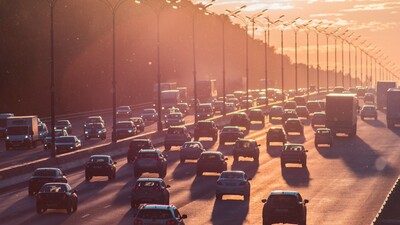Oil, chemicals and road debris that are washed into storm drains or culverts during heavy rainfall are bringing a toxic combination of pollutants to watercourses, causing significant damage to natural habitats and threatening aquatic life. They may even pose a threat to human health, with some contaminants known to damage DNA, impact the nervous system and cause cancer.
In this blog post, we investigate how thoroughly this situation is being monitored and what can be done to alleviate it.
Toxic runoff monitoring: who is responsible?
England’s road network features over 18,000 outflows or drains to remove stormwater from road surfaces and while National Highways is responsible for overseeing the construction and maintenance of the road network, the Environmental Agency (EA) is responsible for monitoring water pollution.
However, while the EA acknowledges that pollution from runoff is a significant issue that accounts for 18% of water quality failures in England, it currently doesn’t run a routine monitoring programme to detect pollutants.
There’s also the issue of permits. The EA can, and does, give permits for activities that may potentially cause pollution. These permits set limits on pollution and establish rules that keep environmental harm to a minimum and are routinely applied to sewage outfalls.
Politicians have been urging the EA to extend this to stormwater outfalls, but except for some of the most polluting outfalls, they claim that in general, permits wouldn’t reduce pollution.
Back to National Highways, who in recognition of the issue have used a computer model to identify higher-polluting outfalls. Of these, 250 are expected to require mitigation measures. Of these, mitigation is only expected to be in place at 30 sites by the end of 2025.
How can toxic runoff be mitigated?
Mitigating environmental harm caused by pollutants from highway rainwater runoff may involve a combination of preventive and remedial measures. Here are several methods that can be implemented:
Vegetated Swales
Constructing vegetated swales or ditches along roadsides can help absorb and filter pollutants from rainwater, allowing natural processes to break down and reduce contaminants.
Detention Basins
Building detention basins temporarily stores rainwater, allowing sediments and pollutants to settle before the water is released slowly. This helps prevent sudden runoff surges.
Retention Basins
These basins permanently hold water, allowing for continuous filtration and reducing the volume of runoff reaching water bodies.
Oil and Grit Interceptors
Installing these devices in drainage systems can effectively capture and separate oil, grease, and solid particles from the runoff, preventing them from entering waterways.
Constructed Reed Beds
Creating reed beds with specific plant species can enhance filtration, as the plants absorb and break down pollutants. Reed beds act as natural filters, improving water quality before it reaches water bodies.
Silt Fences and Sediment Basins
Implementing physical barriers like silt fences and sediment basins can trap sediments carried by runoff, preventing them from reaching watercourses and causing sedimentation.
Advanced Filtration Systems
Exploring and implementing advanced filtration technologies, such as media filters or stormwater treatment devices, can enhance the efficiency of pollutant removal from runoff.
Mitigation during construction
Road and highway construction, repair and maintenance can also create higher levels of pollution. One way to mitigate this is by preventing pollutants from entering the storm drain system, and this is where the MuckStopper® Gully Silt Trap comes into its own. Designed to fit easily and quickly below the grating of a stormwater gully, it enables water to pass through freely but retains all silt and debris that may be washed into the gully.
We hope you have found this information helpful and interesting. If you have any further questions you are always welcome to call our friendly team of experts on 01420 555600 or email [email protected].
Also, look out for more articles in our ongoing series of blog posts, bringing you useful information, insights, guides and tips on all things drainage!

Written by
Mark Chambers
Marketing Manager
As Marketing Manager, Mark plays an active role in running strategic projects to increase our brand profile.

